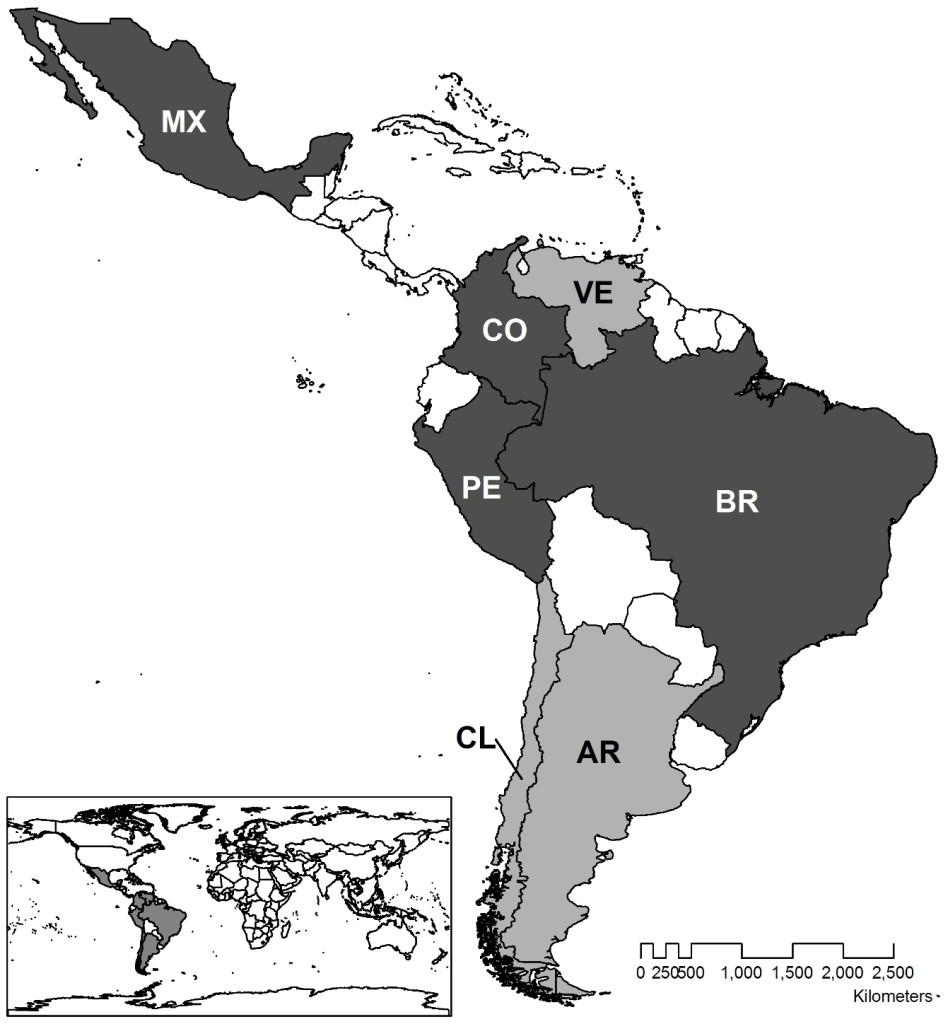 Ana Villarroya, Ana Christina Barros and Joe Kiesecker have published a new paper on “Policy Development for Environmental Licensing and Biodiversity Offsets in Latin America” in PLOS ONE. You can access the full paper here (open access) and find the abstract copied below.
Ana Villarroya, Ana Christina Barros and Joe Kiesecker have published a new paper on “Policy Development for Environmental Licensing and Biodiversity Offsets in Latin America” in PLOS ONE. You can access the full paper here (open access) and find the abstract copied below.
Read also more here: BIODIVERSITY OFFSETTING ADVANCES IN LATIN AMERICA AMIDST CONTROVERSY, September 23, 2014, by Emilio Godoy (see alsohere and here and here)
Abstract
Attempts to meet biodiversity goals through application of the mitigation hierarchy have gained wide traction globally with increased development of public policy, lending standards, and corporate practices. With interest in biodiversity offsets increasing in Latin America, we seek to strengthen the basis for policy development through a review of major environmental licensing policy frameworks in Argentina, Brazil, Chile, Colombia, Mexico, Peru and Venezuela. Here we focused our review on an examination of national level policies to evaluate to which degree current provisions promote positive environmental outcomes. All the surveyed countries have national-level Environmental Impact Assessment laws or regulations that cover the habitats present in their territories. Although most countries enable the use of offsets only Brazil, Colombia, Mexico and Peru explicitly require their implementation. Our review has shown that while advancing quite detailed offset policies, most countries do not seem to have strong requirements regarding impact avoidance. Despite this deficiency most countries have a strong foundation from which to develop policy for biodiversity offsets, but several issues require further guidance, including how best to: (1) ensure conformance with the mitigation hierarchy; (2) identify the most environmentally preferable offsets within a landscape context; (3) determine appropriate mitigation replacement ratios; and (4) ensure appropriate time and effort is given to monitor offset performance.
